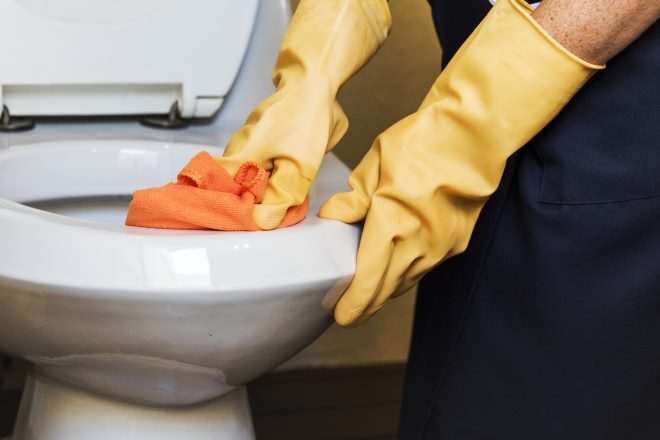Read Tips for Portable Restroom Rentals
Planning an event or managing a construction site requires careful consideration of sanitation facilities. Portable restroom rentals provide essential amenities for guests and workers alike, but selecting the right units and services involves more than just ordering the first option available. Understanding the key factors that influence portable restroom rental decisions can significantly impact comfort, accessibility, and overall satisfaction.

When organizing outdoor events, construction projects, or any gathering without permanent bathroom facilities, portable restroom rentals become a necessity rather than a luxury. Making informed choices about these temporary facilities ensures comfort and convenience for all users while maintaining proper sanitation standards. This guide covers essential aspects of portable restroom rentals to help you navigate the selection process effectively.
Understand Essential Features of Portable Restrooms
Portable restrooms come in various configurations designed to meet different needs. Standard units typically include a toilet, urinal, toilet paper dispenser, and hand sanitizer. However, many providers offer enhanced features worth considering. Upgraded units may include handwashing stations with running water, mirrors, interior lighting for nighttime use, and climate control options for extreme weather conditions.
For events catering to diverse audiences, ADA-compliant accessible units feature wider doorways, grab bars, and sufficient interior space for wheelchair maneuverability. Some premium options even include flushing toilets, countertops, and solar-powered lighting. When evaluating features, consider your specific audience needs, event duration, and location constraints to select appropriate amenities.
Discover Ideal Placement Strategies for Maximum Efficiency
The strategic placement of portable restrooms significantly impacts user experience and operational efficiency. As a general guideline, units should be positioned on level ground in easily accessible locations that remain visible yet discreet. For events, placing units at the perimeter allows service trucks to access them without disrupting activities.
Consider distributing units throughout larger venues rather than clustering them in one area, reducing wait times and improving accessibility. Keep units at least 15-20 feet away from food service areas while ensuring they remain within reasonable walking distance from main activity centers. For construction sites, place units near work areas but away from hazardous zones and materials. Proper signage directing people to restroom locations completes an effective placement strategy.
Compare Services for Your Specific Rental Needs
Portable restroom providers offer varying service packages that extend beyond simply dropping off units. Standard services typically include delivery, pickup, and basic maintenance. However, for multi-day events or extended construction projects, regular servicing becomes essential. This includes waste removal, restocking supplies, and sanitization.
When comparing services, inquire about service frequency options, emergency response protocols for unexpected issues, and whether attendants are available for high-traffic events. Some providers offer specialized services like wastewater tracking for environmentally sensitive areas or digital monitoring systems that alert when units need servicing. The comprehensiveness of these services directly impacts user experience and should be evaluated alongside the physical units themselves.
Evaluate Options for Various Events and Situations
Different scenarios call for different portable restroom solutions. For elegant weddings or corporate functions, luxury restroom trailers with flushing toilets, running water, air conditioning, and high-end finishes create a more permanent bathroom experience. Construction sites typically require durable, basic units that can withstand rough conditions and frequent use.
Festivals and large public gatherings benefit from a combination of standard units and specialized facilities like ADA-accessible restrooms and family-friendly options with changing tables. For disaster relief or emergency situations, self-contained units that don’t require external water or power connections prove most practical. When evaluating options, consider the nature of your event, duration, expected attendance, and specific needs of your audience.
Make Informed Rental Decisions with Cost Considerations
Portable restroom rental costs vary based on several factors including unit type, rental duration, location, and service frequency. Understanding the pricing structure helps in budgeting appropriately while meeting sanitation needs. Standard units typically range from $80-$175 per weekend, while luxury trailers can cost $900-$3,500 depending on size and amenities.
| Restroom Type | Daily Rate Range | Weekly Rate Range | Service Frequency Included |
|---|---|---|---|
| Standard Unit | $75-$100 | $150-$250 | Once per week |
| ADA-Accessible | $100-$175 | $225-$350 | Once per week |
| Deluxe Flushing Unit | $150-$300 | $400-$600 | Once per week |
| 2-Station Trailer | $450-$900 | $1,200-$2,000 | Daily service available |
| 10-Station Luxury Trailer | $1,500-$3,500 | $3,000-$7,000 | Daily service available |
Prices, rates, or cost estimates mentioned in this article are based on the latest available information but may change over time. Independent research is advised before making financial decisions.
Additional cost factors include delivery distance, service frequency, and seasonal demand. Many providers offer volume discounts for multiple units, while emergency or last-minute rentals often incur premium charges. Request detailed quotes from multiple providers to compare not just base rental costs but also additional fees for services like extra cleanings or special delivery requirements.
Plan for Adequate Quantity and Accessibility
Determining the appropriate number of portable restrooms is crucial for event success and user satisfaction. Industry standards suggest one standard unit per 50 people for a four-hour event with no food or beverages served. When food and drinks are available, this ratio increases to one unit per 35-40 people. For construction sites, OSHA guidelines recommend one toilet for every 20 workers for a 40-hour workweek.
Beyond quantity, accessibility considerations are equally important. Include at least one ADA-compliant unit for every 20 standard units or as required by local regulations. For multi-day events, increasing the number of units or scheduling more frequent servicing helps maintain cleanliness and functionality throughout the duration. Weather conditions may also influence quantity needs, as extreme heat or cold can affect usage patterns and comfort levels.
By carefully considering features, placement, services, event-specific needs, costs, and quantity requirements, you can make truly informed decisions about portable restroom rentals that meet both practical needs and user expectations. The right choices ensure that this essential service supports rather than detracts from your event or project’s success.


